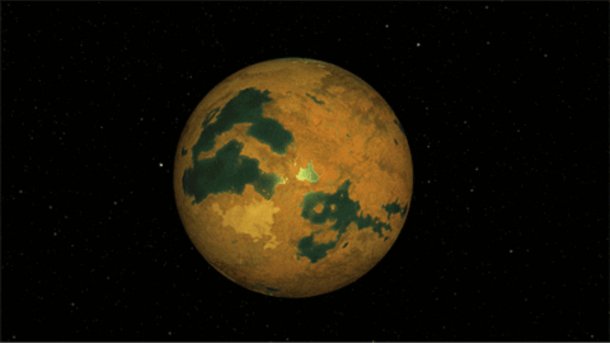"Spock's home goes poof": Alleged exoplanet at 40 Eridani does not exist
In 2018, an exoplanet was allegedly discovered in the star system 40 Eridani - where "Vulcan" is located in Star Trek. It is now certain that it does not exist.

This is how the exoplanet was imagined
(Image: JPL-Caltech)
The alleged exoplanet in the star system where Vulcan Spock's homeworld is located in the Star Trek universe definitely does not exist. This is the result of follow-up observations with a new measuring device at the Kitt Peak National Observatory in the US state of Arizona, reports NASA. Volcano "goes poof" is the title of the corresponding announcement. The first major doubts about the existence of the celestial body in the 40 Eridani star system were raised a year ago and have now been confirmed. This means that the exoplanet has, to a certain extent, met the fate of its fictional role model: in the 2009 film "Star Trek", it was destroyed by a black hole in the fictional universe – but only in an alternative timeline.
Last doubts dispelled
40 Eridani (also ο2 Eridani, Keid or HD 26965) is a triple system. A few months before his death, Star Trek creator Gene Roddenberry told the largest US magazine for amateur astronomy in 1991 that Vulcan was located right there in his fictional world. Otherwise, the star Epsilon Eridani would also have been a possibility. So when an exoplanet was apparently discovered in the real star system in 2018, it caused quite a stir, and not just among Star Trek fans. At first, it looked as if the supposed exoplanet, which is between the size of Earth and Neptune, orbited its star once every 42 days. Even at the time of the discovery, it was acknowledged that it could be a "false positive".
After considerable doubt was cast on the existence of the exoplanet a year ago, it can now be safely ruled out, writes NASA. This is based on data from the NEID instrument, which is installed on the WIYN telescope. This can measure the so-called radial velocity of a star much more precisely. In this process, minimal shifts in the spectrum of the incoming light are used to deduce the star's own movements, which originate from the gravitational pull of planets. NEID can do this separately for different wavelengths. This revealed significant differences. This confirmed the assumption that the 42-day rhythm is due to changes on the surface of the star and not a planet.
The fact that we do not know of any exoplanets at 40 Eridani does not mean that there are none there. Our instruments may not yet be precise enough for smaller exoplanets. So Star Trek fans need not give up hope just yet. At the same time, the work now presented in The Astronomical Journal shows that planets called Vulcan really don't have an easy time of it. When it was discovered in the 19th century through increasingly precise measurements that the orbit of Mercury deviated from theoretical predictions, the existence of a planet with this name was postulated once before. However, by the time Albert Einstein provided the actual explanation for the deviation with his theory of relativity, a planet called Vulcan had already gone poof.
(mho)